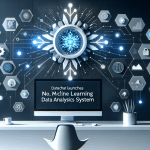In today’s rapidly evolving business landscape, Chief Data Officers (CDOs) and Chief Information Officers (CIOs) face increasing pressure to extract actionable insights from vast amounts of data. Connected data visualization has emerged as a transformative technology, enabling organizations to enhance decision intelligence and drive strategic growth. This blog post will explore how CDOs and CIOs can leverage connected data visualization to maximize their decision-making capabilities.
The Importance of Decision Intelligence
Decision intelligence (DI) combines artificial intelligence and data analysis with cognitive science, providing leaders with the insights needed to make informed business choices. By employing DI frameworks, organizations can:
- Improve accuracy: Reduce human bias and error in decision-making.
- Enhance speed: Make quicker decisions through real-time data analysis.
- Boost efficiency: Streamline processes and allocate resources more effectively.
Understanding Connected Data Visualization
Connected data visualization refers to the integration of multiple data sources into a cohesive visual format, enabling the analysis of complex datasets in real time. This approach not only simplifies complex information but also makes it more accessible and understandable for stakeholders at all levels. Here are some critical components that make connected data visualization essential:
- Interactivity: Users can manipulate visualizations to explore different data scenarios.
- Collaboration: Teams can work together on data analysis, leading to collective intelligence.
- Real-time analysis: The ability to view up-to-the-minute data helps in timely decision-making.
Key Benefits for CDOs and CIOs
For CDOs and CIOs, adopting connected data visualization can lead to various advantages:
1. Enhanced Data Accessibility
Connected data visualization platforms often offer intuitive dashboards and interfaces that make visual data analysis accessible to non-technical users. This democratization of data ensures that stakeholders from various departments can access and interpret data without relying exclusively on data scientists or IT staff.
2. Improved Cross-Departmental Collaboration
With connected data visualization tools, data from different departments can be combined, showcasing common trends and insights. This cross-departmental visibility fosters collaboration and helps align organizational goals. For example:
- Marketing teams can view customer behavior data alongside sales figures.
- Operations can analyze supply chain inefficiencies relative to financial forecasts.
3. Faster Reaction to Market Changes
Connected data visualization provides organizations with the agility needed to respond quickly to changing market conditions. By analyzing real-time data, CDOs and CIOs can identify emerging trends and adapt their strategies accordingly. This rapid response capability is crucial in maintaining a competitive edge.
4. Enhanced Predictive Analytics
One of the primary advantages of connected data visualization is the ability to leverage predictive analytics. By utilizing historical data and trends, organizations can forecast future performance and identify potential risks. CDOs and CIOs can use these analytics to:
- Identify challenges before they escalate into significant issues.
- Allocate resources more effectively based on expected demand.
Implementing Connected Data Visualization: A Step-by-Step Guide
To maximize the benefits of connected data visualization, CDOs and CIOs can follow a systematic approach:
Step 1: Assess Current Data Infrastructure
Understanding the existing data architecture is crucial. Identify how data is collected, stored, and analyzed within your organization. This assessment will highlight areas for improvement and integration.
Step 2: Choose the Right Visualization Tools
Select connected data visualization tools that align with your organization’s specific needs. Consider factors such as:
- User interface: Is it intuitive and user-friendly?
- Compatibility: Does it integrate seamlessly with existing data sources?
- Scalability: Can it grow with your organization’s needs?
Step 3: Train Teams for Effective Use
Investing in training programs is essential to ensure that all team members can use the visualization tools effectively. Training will maximize user engagement and improve the quality of insights derived from data analysis.
Step 4: Foster a Data-Driven Culture
Encouraging a culture that values data-driven decision-making is vital. CDOs and CIOs should promote the use of data visualization throughout the organization, showcasing successful case studies and emphasizing the benefits of informed decision-making.
Step 5: Continuously Monitor and Optimize
Data visualization is not a one-time setup; it requires ongoing evaluation and refinement. Continuous monitoring of the effectiveness of visualization strategies can reveal new insights and areas for improvement, ensuring that your organization stays ahead of competitors.
Conclusion
For CDOs and CIOs, the integration of connected data visualization is not just a technological upgrade—it’s a critical step toward enhancing decision intelligence. By embracing this approach, organizations can effectively leverage their data, promote collaboration, and maintain agility in a dynamic business environment. As leaders in their respective fields, CDOs and CIOs have the opportunity to transform their organizations into data-driven powerhouses, capable of making informed decisions that drive sustainable growth.
In a world where data is omnipresent, connected data visualization is the key to unlocking its full potential.





